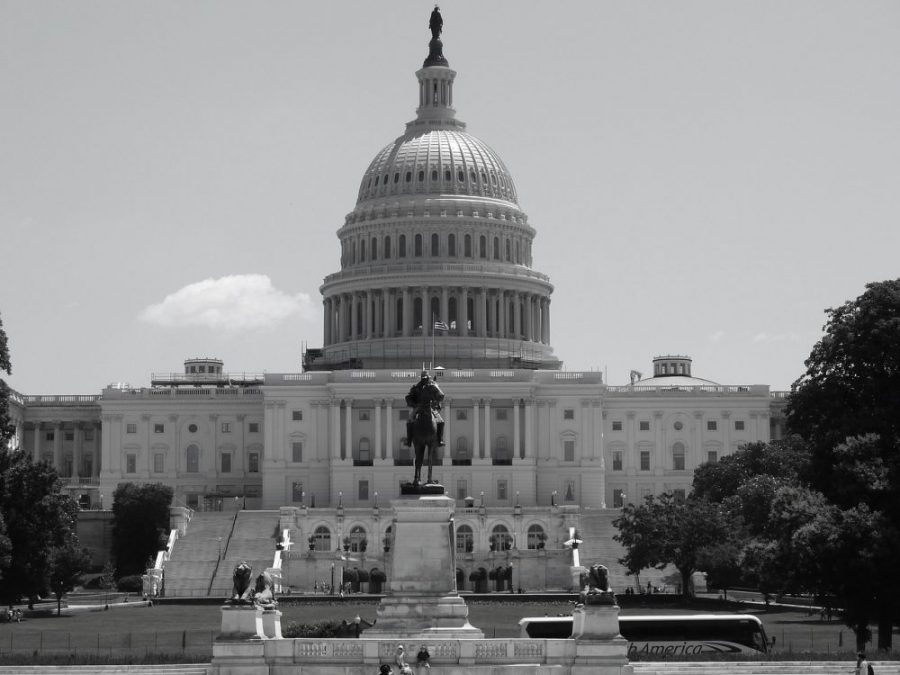FOMC statement at 2 PM, and Fed Chair Powell’s news conference at 2:30 PM. Those times have not changed despite the 3-hour delay today in opening the government. I will forward a transcript as soon as it becomes available.
President Trump’s schedule (EST):
11:30 AM Daily intelligence briefing.
“Trade Talks With China Open in Washington, as Obstacles Abound.” This morning’s New York Times article leads with:
Top officials from the United States and China will sit down in the Eisenhower Executive Office Building on Wednesday for two days of face-to-face trade talks that could prove critical to the trajectory of the world economy.
Negotiations to end a months long trade war between the world’s two largest economies will be led by Robert Lighthizer, the United States trade representative, and Liu He, China’s vice premier. President Trump plans to meet with Mr. Liu at the conclusion of the talks on Thursday.
The countries are facing a March 2 deadline to reach a trade agreement — or the United States will raise tariffs on $200 billion of Chinese imports. But there is little chance that every issue will be resolved by that date, and Trump administration officials describe the negotiations as exponentially more complicated than anything the White House has tackled to date.
Here’s what to watch during this critical round of negotiations.
“As China Trade Talks Begin, Trump Faces Pressure to Make a Deal.” Last night’s Wall Street Journal article led with:
WASHINGTON—As the U.S. and China resume high-level trade talks Wednesday, President Trump sees himself with the upper hand given China’s lagging economic growth, but there is pressure for Mr. Trump and his administration to cut a deal too.
“On Both Ends of Capitol, Both Parties Warn Big Pharma on Drug Prices.” Yesterday’s New York Times article led with:
WASHINGTON — Members of Congress from both parties served notice on pharmaceutical companies on Tuesday that the days of unchecked drug-price increases were over and that they would be held politically accountable for exorbitant prices.
The new reality became apparent at simultaneous but separate hearings of House and Senate committees where lawmakers said that the relentless increases were unsustainable and unacceptable.
“There is a strong bipartisan consensus that we must do something to rein in out-of-control price increases,” said Representative Elijah E. Cummings, Democrat of Maryland and the chairman of the House Committee on Oversight and Reform. “Drug companies make money hand over fist by raising the prices of their drugs — often without justification and sometimes overnight — while patients are left holding the bill.”
On the other side of the Capitol, Senator Charles E. Grassley, Republican of Iowa and the chairman of the Finance Committee, and Senator Ron Wyden of Oregon, the senior Democrat on the panel, denounced drug company executives who they said had refused to testify voluntarily.
“First House Infrastructure Hearing to Highlight Costs of Delay.” This morning’s CQ Roll Call article led with:
The House Transportation and Infrastructure Committee will kick off its effort to boost highway and transit spending this year with a hearing Feb. 7 to emphasize the cost of delaying upgrades to aging roads, bridges, transit systems and airports.
“What happens if the rail tunnels under the Hudson River fail, what happens when the tunnel under Baltimore fails, built in the Civil War?” Chairman Peter A. DeFazio, D-Ore., told CQ last week during an interview. “What happens when two bridges, one 89 years old and one 60 years, over the Columbia River, they’re going to fail during an earthquake. And then I-5 is cut off?
“We need to begin thinking about what are the costs and the potential for calamity if we don’t make these investments,” he said.
DeFazio said Democrats want to pass a package before this summer that supplements the 2015 FAST Act (PL 114-94), a five-year transportation law that runs through the end of September 2020.
The plan relies on the Ways and Means Committee to find the funding for new projects and plug a shortfall between the amount spent now from the Highway Trust Fund and the revenue generated from the federal gas tax, which was last raised in 1993.
Infrastructure has fallen out of the news, but I still expect a major bipartisan infrastructure bill to be enacted by summer.
Shutdown avoidance? At yesterday morning’s news conference, Senate Majority Leader McConnell has this exchange:
QUESTION:
Mr. Leader, would you support legislation to end shutdowns once and for all?
MCCONNELL:
Well, to modify one of my quotes that usually brings a smile to your face, there certainly would be no education in the third kick of the mule. I don’t like shutdowns. I don’t think they work for anybody. And I hope they will be avoided.
I’d be open to anything that we could agree on on a bipartisan basis that would make them pretty hard to occur again. There are some differences about how to craft that. But I’m certainly open to it. I think this is an example of government dysfunction, which is–should be embarrassing to everyone on a bipartisan basis.
QUESTION:
Senator McConnell, you’re a long time appropriator. What is the right scope for this Conference Committee? We’ve had other people talk about immigration, DACA, debt ceiling. Would you be okay if they can forge an agreement and it wanders off into those other areas, or you want to keep it just strictly to border security?
MCCONNELL:
I’m for whatever works, which means avoiding a shutdown and avoiding the president feeling he should declare a national emergency. Exactly how to do that, as you all know, has been quite challenging.
QUESTION:
So, that sounds like–broader, a broader scope.
MCCONNELL:
I’m for narrow or broader. I’m for whatever works that prevents the level of dysfunction we’ve seen on full display here the last month and also doesn’t bring about a view on the president’s part that he needs to declare a national emergency.
“Big border deal fades before talks even begin.” Last night’s Politico article led with:
Congressional negotiators haven’t even held their first meeting to avert another shutdown, but the prospect of a big deal on border security and immigration is essentially dead.
When President Donald Trump caved in on the 35-day shutdown fight last week, he encouraged Congress to come up with a compromise — perhaps a trade of wall funding for temporary relief for Dreamers as he had previously proposed.
But Democrats are ruling out the idea of negotiating on Deferred Action for Childhood Arrivals, skeptical that Trump would actually provide a permanent fix for the young undocumented immigrants after he previously rejected just such a deal. Meanwhile, top Republicans also doubt an expansive agreement could be put together in the next three weeks.
I expect another shutdown to be avoided somehow, but, so far, it’s not obvious how.
“Mnuchin Open to Pairing Debt Ceiling With Spending Package.” Last night’s Wall Street Journal article led with:
WASHINGTON—Treasury Secretary Steven Mnuchin is open to the idea of attaching a debt-limit suspension to a must-pass spending measure to keep the government open beyond Feb. 15, according to a person familiar with the discussions. But lawmakers from both parties poured cold water on that strategy Tuesday.
Sen. Lindsey Graham (R., S.C.) said Tuesday he discussed the idea with Mr. Mnuchin, President Trump and others at a dinner Monday evening at the Trump Hotel. The group, which also included Vice President Mike Pence, met to discuss the continuing negotiations over the spending bill and Mr. Trump’s proposed border wall. A bipartisan working group of House and Senate members are trying to hammer out a deal that would prevent another partial government shutdown on Feb. 15.
Mr. Graham said he urged Mr. Trump to push for an increase in the borrowing limit as part of the spending package.
“I think the president understands we need to raise the debt ceiling,” Mr. Graham told CNN Tuesday.
Mr. Mnuchin thought it was a good idea, the person said, though the Treasury Department hasn’t taken an official position. The person didn’t say whether Mr. Trump supports the idea.
IRS says tax refunds will go out on time. Monday’s Internal Revenue Service press release stated:
The IRS expects the first refunds to go out in the first week of February and many refunds to be paid by mid- to late February like previous years. …
The IRS expects about 90 percent of returns to be filed electronically. …
The IRS expects to issue more than nine out of 10 refunds in less than 21 days. However, it’s possible a tax return may require additional review and take longer. …
The IRS also notes that refunds, by law, cannot be issued before Feb. 15 for tax returns that claim the Earned Income Tax Credit or the Additional Child Tax Credit. This applies to the entire refund — even the portion not associated with the EITC and ACTC. While the IRS will process the EITC and ACTC returns when received, these refunds cannot be issued before Feb. 15. Similar to last year, the IRS expects the earliest EITC/ACTC related refunds to actually be available in taxpayer bank accounts or on debit cards starting on Feb. 27, 2019, if they chose direct deposit and there are no other issues with the tax return.
The IRS will start posting weekly filing season statistics here on Fridays starting February 8th.
“Don’t Judge Your Taxes by Your Refund.” Yesterday’s Tax Foundation blog stated:
The Treasury Department simulated how the withholding table changes would impact taxpayers in 2018. They estimated that the percentage of taxpayers who underwithhold their taxes would increase slightly, from 18 percent to 21 percent, but that the majority of taxpayers, 73 percent, would still overwithhold. Similarly, the Internal Revenue Service has estimated that the number of people receiving tax refunds between February and May of this year will fall by about 2.5 million, or 2.3 percent, compared to the same period in 2017. Ultimately, the effects of the new withholding tables vary depending on each taxpayer’s unique situation. …
Now, it’s quite possible that some individuals will experience the opposite [a larger refund], as the Government Accountability Office (GAO) report notes. While the aggregate figures the percentages of people over- and underwithheld are relatively constant, the individuals themselves might not be so constant. The GAO report specifies that families with children eligible for the child tax credit are more likely to be substantially overwithheld, thus receiving larger refunds, if families did not make updates to their W-4s.
“The Real Lesson of 70 Percent Tax Rates on Entrepreneurial Income.” Yesterday’s Tax Foundation analysis concluded:
- Recent debates over income inequality have focused on the role of higher income tax rates during the 1930’s through the 1980s. Some assert these higher rates reduced income inequality, relative to today, when income tax rates are significantly lower.
- These arguments fail to consider that the high individual tax rates from 1950 through 1980 largely drove entrepreneurial business income out of the individual income tax system and into the corporate income tax system.
- This phenomenon reversed itself during the 1980s when the top individual income tax rate fell below the corporate rate and restrictions on the structure and participation in partnerships and S corporations eased.
- These trends suggest that the high personal income rates from 1950 through 1980 simply encouraged the rich to modify the composition of their income. Their wealth was still there during this period, it was just not accounted for on individual tax returns. The shifting composition of income claimed by the rich due to changes in tax laws explains this illusion.
- Focusing solely on the individual income tax data leads to a misjudgment on the historic level of inequality.
“Supreme Court antitrust case bypasses traditional technology regulators.” Yesterday’s Brookings blog led with:
A string of controversies in recent years involving tech companies has led many observers to call for stronger antitrust enforcement and a tougher competition policy. A new addition to this public demand comes from an unlikely source: In November 2018, the Supreme Court heard oral arguments in a case brought by Apple to dismiss a lawsuit from Robert Pepper and three other iPhone owners. The defendants in Apple Inc. v. Pepper accuse the company of acting like a monopolist by controlling which apps to publish in its app store, taking a cut of sales, and prohibiting other app distributors. The Court’s decision could have major implications beyond this case for e-commerce companies that act as platforms for matching buyers with sellers. A decision for the defendants in Apple Inc. v. Pepper might also force large platform companies to alter current business models based on providing mobile apps.







